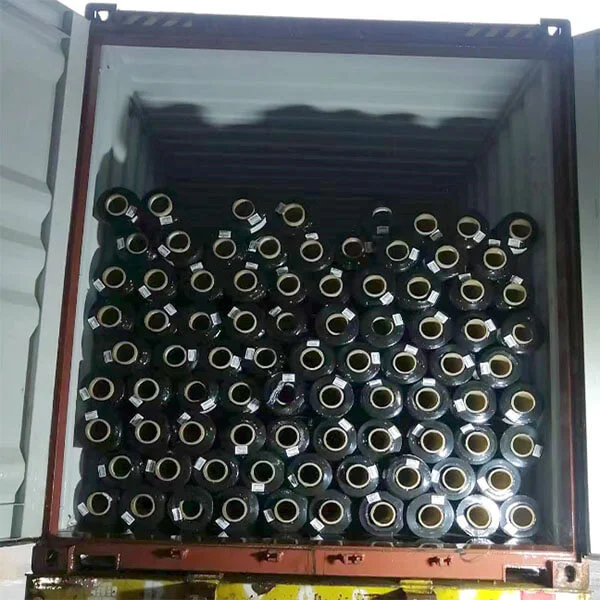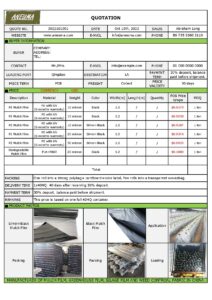Table of Contents
Introduction
Weed control in agriculture is a battle that every farmer faces. The intrusion of weeds can choke crops, compete for essential resources like water and nutrients, and significantly reduce yields. In this ongoing battle, weed control fabrics have emerged as valuable allies for modern farmers. These specialized materials provide an effective barrier against weed growth, making them an essential tool in agriculture and landscaping.

Woven Weed Control Fabrics
Definition and Characteristics Woven weed control fabrics are crafted from polypropylene or other durable materials. They are characterized by their strong, woven texture, which makes them ideal for long-term weed control in commercial farming. The tight weave prevents weed penetration while allowing water and nutrients to pass through.
Applications in Commercial Farming Woven fabrics find extensive use in large-scale farming operations. They are commonly employed in row cropping, orchards, and vineyards. Their durability and ability to withstand heavy foot traffic make them suitable for high-traffic areas.
Advantages and Limitations The advantages of woven weed control fabrics include long-lasting weed suppression, excellent durability, and resistance to UV rays. However, their effectiveness may diminish over time due to soil compaction or weed growth in the mulch layer.
Non-Woven Weed Control Fabrics
Definition and Structure Non-woven weed control fabrics are made from synthetic fibers that are pressed together to create a dense, felt-like material. These fabrics are porous, allowing for water and air permeability. They are often used in seasonal gardening projects and landscaping.
Suitable Uses in Gardening and Landscaping Non-woven fabrics are well-suited for use in smaller-scale gardening and landscaping. They are an excellent choice for flower beds, vegetable gardens, and areas where seasonal crops are grown. Their ability to allow water and air to reach the soil beneath makes them popular among home gardeners.
Benefits and Considerations Non-woven fabrics are easy to install and offer short-term weed control. They are cost-effective and an excellent choice for projects where long-term durability is not a primary concern. However, they may need replacement after a few seasons, and their porous nature can allow weeds to grow through if not properly maintained.

Biodegradable Weed Control Fabrics
Understanding Biodegradable Materials Biodegradable weed control fabrics are crafted from natural materials that break down over time. These fabrics are an environmentally friendly option for those practicing sustainable farming and gardening.
Eco-Friendly Applications in Sustainable Farming Biodegradable fabrics are favored in organic farming and sustainable agriculture. They reduce the need for fabric removal after use, as they naturally degrade into the soil, enriching it with organic matter. These fabrics are often used in smaller-scale farming and gardening projects where sustainability is a priority.
Biodegradable Fabric Advantages The primary advantage of biodegradable weed control fabrics is their eco-friendliness. They minimize the environmental impact of weed control and contribute to healthier soil. However, they may have a shorter lifespan compared to non-biodegradable options.
Thermal Weed Control Fabrics
Introduction to Thermal Fabrics Thermal weed control fabrics utilize heat-based methods to eliminate weeds. These fabrics are designed to heat the soil beneath, effectively sterilizing it and preventing weed growth.
Heat-Based Weed Control Methods Thermal fabrics can be used in conjunction with propane burners or electric heating elements. They are typically installed over the soil and heated to temperatures that destroy weed seeds and plant tissue.
Thermal Fabric Effectiveness Thermal weed control fabrics are highly effective in eliminating weeds without the use of chemicals. They are often used in nurseries, greenhouse production, and organic farming. However, careful monitoring of temperatures is essential to prevent damage to desired plants.
In the next sections, we will explore how to select the right weed control fabric, proper installation techniques, common challenges faced by farmers, and real-world case studies highlighting the effectiveness of these fabrics. Additionally, we will conclude our exploration with a look at Aneuma Weed Control Fabric and how it can elevate your farming efforts.
Factors Influencing Fabric Choice Choosing the appropriate weed control fabric is crucial for achieving the desired results in your agricultural or landscaping project. Several factors should influence your selection:
- Crop Type: Different crops have varying requirements, so the fabric you choose should complement the specific crop’s needs.
- Durability: Consider the expected lifespan of your project. For long-term applications, durable woven fabrics may be the best choice, while non-woven fabrics may suffice for shorter-term needs.
- Permeability: Assess the water and air permeability requirements of your crops. Some plants thrive with high permeability, while others prefer a more controlled environment.
- Environmental Considerations: If sustainability is a priority, biodegradable options might align with your goals.

Weed Control Fabric Installation
Proper Installation Techniques The effectiveness of weed control fabrics depends on proper installation. Here are some key steps:
- Prepare the Soil: Clear the area of existing weeds and debris, ensuring the soil is smooth and level.
- Lay the Fabric: Unroll the fabric over the prepared soil, leaving some excess material at the edges to anchor it securely.
- Secure Edges: Use fabric pins or other suitable anchors to secure the edges of the fabric to the ground.
- Overlap Seams: If using multiple rolls of fabric, overlap the seams to prevent weed penetration.
Challenges in Weed Control
Common Challenges Faced by Farmers While weed control fabrics offer significant benefits, they are not without challenges:
- Weed Growth at Edges: Weeds can sometimes find their way through gaps at the edges of the fabric.
- Soil Compaction: Over time, the weight of the fabric and the pressure from foot traffic can lead to soil compaction, reducing its permeability.
- Fabric Degradation: Weather conditions and UV exposure can weaken the fabric, reducing its effectiveness.
Mitigation Strategies To address these challenges:
- Regular Inspection: Periodically inspect the fabric for any signs of weed growth or degradation.
- Proper Maintenance: Ensure that the fabric remains well-anchored and in good condition.
- Replacement: When the fabric shows signs of wear or reduced effectiveness, consider replacing it.

Case Studies: Real-World Applications
Success Stories Using Various Fabric Types To illustrate the real-world impact of weed control fabrics, let’s explore a few case studies:
- Case Study 1 – Vineyard Success: A vineyard in California implemented woven weed control fabric to minimize weed competition around their vines. As a result, they reported a significant increase in grape yields and a reduction in labor costs.
- Case Study 2 – Organic Farming: An organic farm in Oregon adopted biodegradable weed control fabric as part of their sustainable farming practices. The fabric naturally degraded into the soil, enriching it with organic matter and reducing the need for synthetic herbicides.
Conclusion
In conclusion, the world of weed control fabrics is diverse, offering a range of options to meet the unique needs of your farming or landscaping project. Whether you choose woven, non-woven, biodegradable, or thermal weed control fabric, each type has its advantages and ideal applications. Selecting the right fabric, installing it correctly, and addressing potential challenges are key to maximizing its benefits.
As you embark on your journey to weed-free, high-yield farming or landscaping, consider the Aneuma Weed Control Fabric as a trusted ally in your efforts. With its proven effectiveness and commitment to sustainable agriculture, Aneuma can elevate your farming endeavors to new heights.

